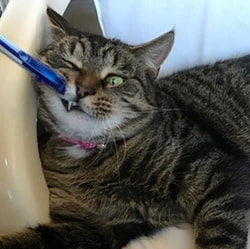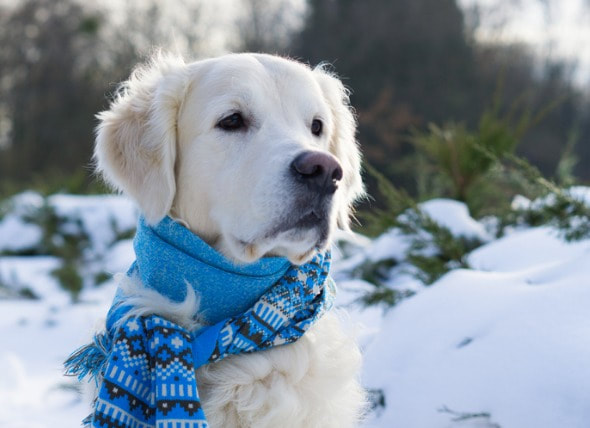February is "National Pet Health Dental Month" Dental disease is the most common clinical condition in cats and dogs even though it is completely preventable! February is National Pet Dental Health Month, but since it is such an important topic and because it was a huge success last year we are extending it into March! Now is the perfect time to call and schedule a dental exam for our furry family members.  Have you ever gotten a sniff of your dog or cat's breath and wrinkled up your nose? Dental care is not just about being minty fresh and having pearly whites. Red gums, yellow teeth and stinky breath are all indicators of dental disease. Did you know that dental disease doesn't just damage your pet's teeth and gums? Left untreated, dental disease can also affect your pet's internal organs as well. All too often, oral care is something that is overlooked with our furry friends. Maybe its because your cat is less than compliant. Or maybe you already have enough two legged teeth to brush in the household. But imagine how your mouth would feel, taste, smell and look if you NEVER brushed your teeth!  Check out these exciting offers! 50% Off Dental Exams At the Animal Hospital of River Oaks we are passionate about dental care. We have an arsenal of tips, tricks and products to help keep your pet's looking and feeling their best. There is more to dental care than a full teeth cleaning, in this consult will create a personalized dental care plan for your pet. 20% off Dental Cleanings 10% off all Senior Blood Profiles Offer expires: 03/15/2017 Some restrictions apply Call the hospital at 905-338-6257 and take the first step towards dental vitality! Let us work with you to give your furry friend the excellent oral health they deserve.
2 Comments
Happy National Squirrel Appreciation and Hugging DaySQUIRREL APPRECIATION DAY Squirrel Appreciation Day is observed annually on January 21. The creator, Christy Hargrove, is a wildlife rehabilitator in North Carolina and is affiliated with the Western North Carolina Nature Center. According to Christy, “Celebration of the event itself is up to the individual or group — anything from putting out extra food for the squirrels to learning something new about the species.” According to the Integrated Taxonomic Information System of North America (ITIS), there are over 200 species of squirrels. Some of the oldest squirrels categorized on the list are the nocturnal arrow flying squirrel (validated in 1766) and the Black Giant (validated in 1778). Of all these species, they fall into three types. Ground squirrels, such as the thirteen-lined ground squirrel, the rock squirrel, California ground squirrel and many others blanket the prairies and deserts of North America. Often causing damage, they can be considered pests, and they are labeled rodents. Predators enjoy them as a tasty morsel, too. As a result, they work together to protect themselves. Their only protection is to flee! Tree squirrels make their homes in the trees but also find their nesting materials and food both on the ground and above. Making their homes in cities and the countryside in nations all around the globe, these familiar backyard and park residents will make themselves right at home in your birdfeeders or snag your snack right from your hands if they have become practiced enough! The third type of squirrel leaps farther than the others with flaps of skin between the legs. Flying squirrels glide greater distances giving the impression they can fly. When they leap from tree to tree or building to building, they spread their legs wide and float on the breeze escaping predators or perhaps other snarky tree squirrels with a nut to pick with them. NATIONAL HUGGING DAY
National Hug Day or National Hugging Day occurs on January 21 and is officially recognized by the United States Copyright Office, but is not a public holiday. The purpose of the day is to help everyone show more emotion in public. There is only one way you are supposed to celebrate the holiday, offer a hug to anyone and everyone you want. While National Hug Day and the Free Hugs Campaign share many similarities, there is not an association between the two. Whether you hug a family member or a stranger, the mental and physical health benefits are the same. Puppy it's COLD outside!We all know that exercise and the mental stimulation being outdoors play are key to keeping our dogs healthy and happy, but what should we do when it’s cold outside? When do the risks of spending time in the cold outweigh the benefits of being outdoors? Let’s take a look at the dangers associated with winter weather and how we can still safely enjoy the great outdoors with our dogs during wintertime.
All Dogs Aren’t Created Equal Dogs are individuals. An outdoor temperature that feels downright balmy to one dog might send another in search of shelter. What are some of the variables that affect how dogs respond to the cold? Coat type – Dogs with thick, double-layered coats tend to be the most cold-tolerant (think Siberian Huskies, Newfoundlands or Samoyeds). In most cases, these breeds have been developed in Northern climates and may also have other anatomical, physiological or behavioral attributes that allow them to thrive when it’s frigid. On the other hand, dogs who have exceptionally thin coats (e.g., Greyhounds and Xoloitzcuintli) suffer the most in cold weather. Coat color – On a clear day, black, brown, or other dark-coated dogs can absorb significant amounts of heat from sunlight, keeping them warmer in comparison to their light-coated brethren. Size – Small dogs have a larger surface area to volume ratio. In other words, the smaller dogs are the more skin they have (in relation to their “insides”) through which to lose heat. Therefore, small dogs get colder more readily than do large dogs … all other things being equal. Weight – Body fat is a good insulator. Thinner dogs tend to get colder quicker than do their heftier counterparts. That said, the health risks of being overweight far outweigh any benefits, so don’t fatten up your dogs during the winter months in a misguided attempt to protect them from the cold. Conditioning – We’ve all experienced this one. Fifty degrees feels quite chilly in October, but after a long, cold winter, a fifty degree day in April can make us break out the shorts and t-shirts. Dogs who are used to cold temperatures handle them much better than do pets who aren’t. Age and Health – The very young, the very old, and the sick are not as able to regulate their body temperatures in comparison to healthy dogs in the prime of their lives, and they therefore need greater protection from the cold. All Temperatures Aren’t Created Equal The temperature as it registers on a thermometer isn’t the only environmental factor that affects how dogs feel the cold. Wind chill – A brisk breeze can quickly cut through a dog’s coat and greatly decreases its ability to insulate and protect against cold temperatures. Dampness – Rain, wet snow, heavy fog, going for a swim … any form of dampness that soaks through the fur can quickly chill a dog even if the air temperature is not all that cold. Cloud cover – Cloudy days tend to feel colder than do sunny days since dogs can’t soak up the sun and warm themselves. Activity – If dogs are going to be very active while outside, they may generate enough extra body heat to keep them comfortable even if the temperature is quite low. Cold Temperature Guidelines for Dogs In general, cold temperatures should not become a problem for most dogs until they fall below 45° F, at which point some cold-averse dogs might begin to feel uncomfortable. When temperatures fall below 32° F, owners of small breed dogs, dogs with thin coats, and/or very young, old or sick dogs should pay close attention to their pet’s well-being. Once temperatures drop under 20° F, all owners need to be aware that their dogs could potentially develop cold-associated health problems like hypothermia and frostbite. The best way to monitor dogs when it’s cold is to keep a close eye on their behavior. If you notice your dog shivering, acting anxious, whining, slowing down, searching out warm locations or holding up one or more paws, it’s time to head inside. Thank you for the generous donations for "Food For Life"The Animal Hospital of River Oaks staff want to thank everyone that donated non-perishable items during our "12 Furry Days of Christmas Celebrations". Our donations went to helping out people in our community. The non-perishable items were sent to "FOOD FOR LIFE" food bank which runs year round helping the less fortunate. We also want to send a big hug and thank you to some special clients of ours. The "Pellowe Family" who donate their time all year round to the food bank! We look forward to continue helping our community!
|
Our creative team at the Animal Hospital of River Oaks take pride in providing educational information as well as keeping our River Oaks's Families well informed in up-coming events happening at the hospital! Archives
June 2020
Categorieshttps://api.pethealthnetworkpro.com/v1/practices/9b0cebb5-40b2-8d36-d4c2-60de940a795b/survey-responses
|
|
Our Practice:
Animal Hospital of River Oaks 161 Old Upper Middle Rd Oakville, ON L6H 1M2 P: 905-338-6257 905-338-0267 [email protected] Follow us on: FACEBOOK - we have a lot of fun pictures and videos, so please click below on the "f" for a link to our facebook page, and enjoy! Site powered by Weebly. Managed by IDEXX Laboratories
|






